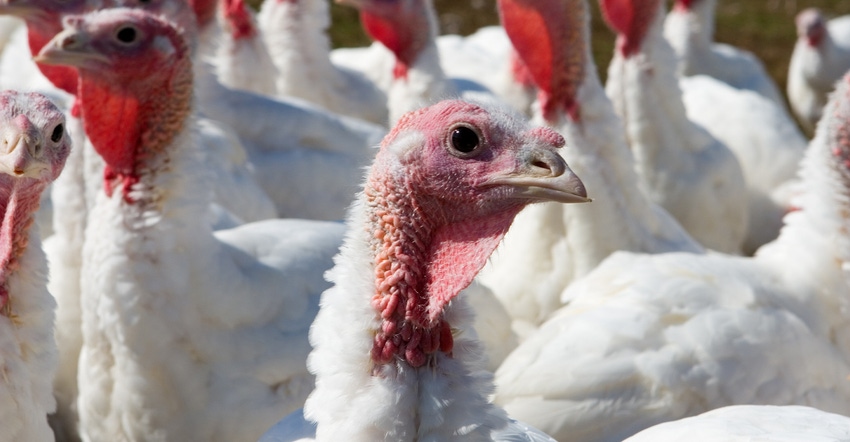Everyone wins when the Salmonella cycle gets broken at poultry operations. Dr. Sangita Jalukar of ARM & HAMMER™ shows how.

Sponsored Content
It's a frustrating cycle. Infected chicks bring Salmonella into the poultry house. They shed bacteria into litter that infects other birds -- often without showing any outward signs or symptoms. After the flock leaves the poultry house, Salmonella can remain active and expose the next group of birds. Thus, a new cycle of infection and reinfection begins without warning. What's worse, if left unchecked during growout, incoming birds can bring high loads of Salmonella into the processing facility and overwhelm standard food safety control measures. Contamination may persist all along the food chain to retail and home environments, presenting a threat to human health and safety. Even more concerning --foodborne disease outbreaks in recent years point to emergence of dangerous new Salmonella serovars that are difficult to control.
Despite the poultry industry's best efforts, Salmonella transmission remains a critical concern throughout all stage of production. From the laying of eggs to consumer consumption of tainted product, there's seemingly no end to the risks posed by this wide-ranging, devastating threat.
Reducing pathogen loads.
Breaking the disease cycle in poultry houses is critical to reduce Salmonella incidence in integrated poultry operations and, ultimately, protect food safety.
Proper hygiene and biosecurity are important practices to manage the Salmonella load entering the poultry house. Thoroughly cleaning and disinfecting houses between flocks prevents exposure and helps break the contamination cycle. Salmonella thrives in wet poultry litter with high pH. Keeping litter dry and at a lower pH helps reduce prevalence in houses. Producers should be aware that contaminated feed and water also may carry and transmit Salmonella.
Feeding for resilience.
In addition to controlling environmental factors, protecting gut health through feed additives can help birds build resiliency against Salmonella. Research shows that feeding Refined Functional Carbohydrates™ (RFCs™) in CELMANAX™ builds strong immune systems and helps poultry cope with health and environmental challenges.
CELMANAX inhibits Salmonella adhesion to cell walls within the bird's gut and reduces bacterial infection and colonization. By promoting a healthy gut lining, CELMANAX makes birds more resilient against challenges from Salmonella and other pathogens that threaten bird health and food safety.
Research shows Salmonella reduction.
Multiple research studies and commercial trials demonstrate the efficacy of CELMANAX against Salmonella threats in broilers, layers and turkeys.
In broiler studies, feeding CELMANAX to birds reduced cecal Salmonella presence compared with controls without CELMANAX. In three of the commercial farms, Salmonella load in broiler ceca decreased by up to 3.5 logs.1 CELMANAX supplementation also reduces S. enteritidis --a troublesome strain blamed for foodborne illness caused by contaminated eggs. In one study2 with layers challenged with S. enteritidis, feeding CELMANAX reduced the pathogen by 1.2 logs compared to controls.
Similar results are seen in turkeys. In research involving turkeys faced with an S. reading challenge, those fed CELMANAX had a pathogen load 1.77 logs lower than control birds.3. You can review summaries of these research results here. Possible synergy with vaccination.
Vaccination is another important strategy to prevent Salmonella infection in poultry. A recent study4 found that feeding CELMANAX did not negatively affect the ability of live Salmonella vaccine AgriPro® Megan® Vac 1 to reduce colonization. In fact, data suggest a synergistic or additive effect between the two interventions.
Salmonella control is everyone's job.
The entire food chain, from farmer to processor to retailer to consumer, shares responsibility for delivering consistently safe poultry products to consumers. Stopping the Salmonella cycle in the poultry house is the first step to prevent its colonization and spread throughout the food chain. Contact an ARM & HAMMER™ representative to discuss strategies to stop the Salmonella cycle in your facility.
1 Composite data from three commercial farms. Data on file. 2019.
2 Hofacre, et al. J Appl Poultry Res 2018;27(4):453-460.
3 Jalukar, et al. 2020 IPSF poster P289.
4 Adapted from a study done at a private Poultry Research Center. Data on file. 2020.
About the Author(s)
You May Also Like

.png?width=300&auto=webp&quality=80&disable=upscale)

